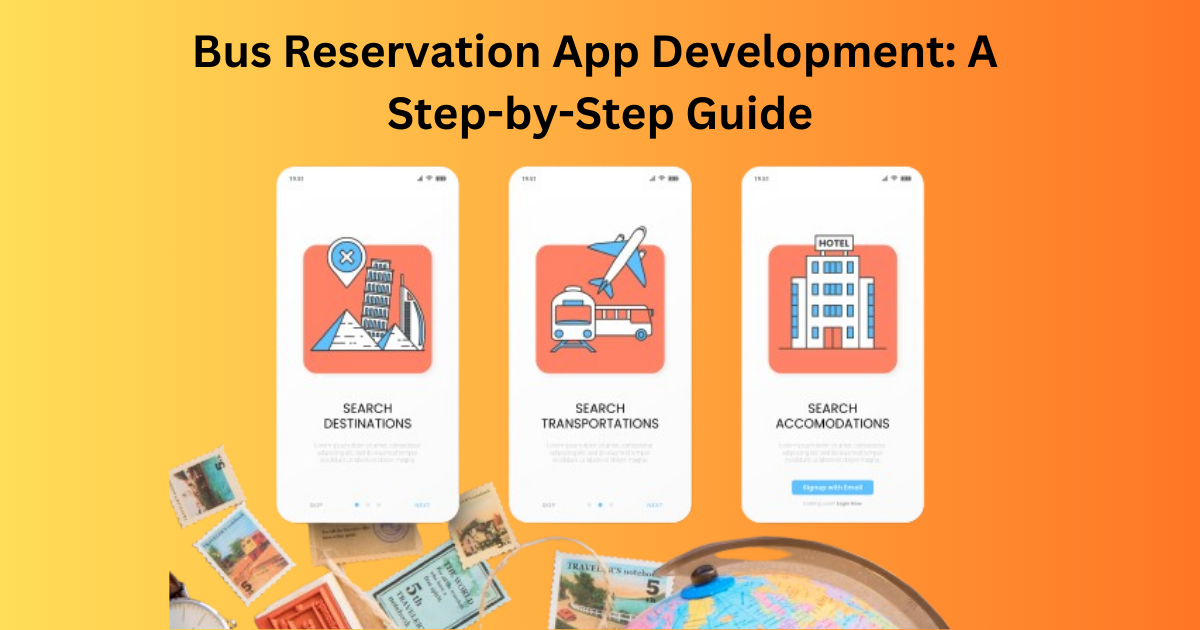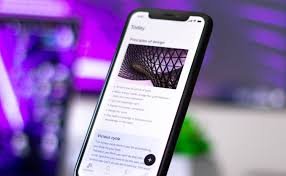In today’s fast-paced world, comfort and efficiency are paramount close to transportation. With the developing virtual transformation, human beings now decide to reserve their journey tickets online instead of being ready in prolonged queues at bus terminals. This is when bus reservation apps come into play, imparting a continuing answer for users to book tickets with only some faucets on their smartphones. The growing demand for such packages makes bus reservation app development a fantastically sought-after provider within the transportation industry.
In this complete guide, we will stroll you through the step-by-step process of bus reservation app development, masking vital capabilities, technologies, and high-quality practices to ensure your app meets contemporary customers’ wishes and stays aggressive within the market.
The Growing Demand for Bus Reservation Apps
The online journey and transportation market is rapidly expanding, and the bus ticket reserving segment is no exception. People price the benefits, flexibility, and ease of online bookings that have made bus booking apps famous. Some of the key elements using the increase of bus reservation apps encompass:
- Time performance: Travelers can e-book their tickets from everywhere, saving time spent in bodily lines at the bus station.
- It’s easy to get admission to information: Users can check schedules, availability, fares, and other necessary statistics on the app.
- Instant price methods: Secure and quick payment gateways allow users to complete online transactions.
- Personalized experience: Apps offer features such as seat selection, ride reminders, cancellation alternatives, and more to customize the user experience.
Given those blessings, improving the bus ticket booking app has become a strategic investment for agencies looking to tap into the transportation quarter’s digital transformation.
Critical Features for a Successful Bus Reservation App
Developing a bus reserving app requires thorough planning and interest in detail to ensure it gives an intuitive and seamless user experience. Here are the have-to-have functions for a successful bus reservation app:
1. User Registration and Authentication
This feature allows customers to create private bills by registering via email, smartphone number, or social media system. After registration, users can log in securely using authentication strategies like passwords, OTP, or biometric verification. This helps create a more personalized consumer experience.
2. Search and Filter Options
The app must allow customers to search for available buses based on their preferred date, time, origin, and vacation spot. Additional filtering options like price range, bus kind (AC/Non-AC), sleeper or seater, and operator possibilities enhance the search experience, permitting customers to find buses that match their requirements.
3. Real-Time Seat Availability
Displaying seat availability in real-time is essential to prevent customers from attempting to e-book unavailable seats. Integrating this feature entails linking your app with the operators’ seat reservation systems to fetch updated seat records.
4. Seat Selection
After checking seat availability, users ought to have the option to choose their favored seats. A visible seat map of the bus can be included to let users select from available seats, making the experience more excellent, person-friendly, and interactive.
5. Booking and Payment
The core feature of any bus reservation app is the booking gadget. Once users have chosen their bus and seat, they have to be able to proceed seamlessly with the reservation process. The fee gateway should support several methods, including credit/debit cards, UPI, digital wallets, and net banking, ensuring flexibility and comfort for users.
6. Booking History
This feature lets users view their preceding bookings and information such as bus operators, departure time, fare, seat number, and booking status (confirmed or canceled). It enhances the general consumer experience by providing clean access to their travel history.
7. Notifications and Alerts
Notifications are crucial for informing users about their bookings, cancellations, trip reminders, and any adjustments to their travel plans. You can inform customers through push notifications, SMS, or email signals.
8. Bus Operator Panel
In addition to a client-going through app, bus operators need an interface to manage their operations. The bus operator panel lets them add or remove buses, update schedules, manipulate seat availability, and get admission to bookings. This facilitates streamlining the technique from the operator’s facet.
9. Geo-Location and GPS Tracking
Integrating GPS tracking permits customers to tune their bus in real-time. They can check the bus’s specific region and anticipated arrival time (ETA). This characteristic increases transparency and acceptance among customers, as they can screen their adventure progress.
10. Cancellation and Refund
Users extraordinarily value flexibility in bookings. Allowing customers to cancel bookings and obtain refunds based on the operator’s cancellation policy can grow the app’s credibility and client satisfaction.
Steps for Bus Reservation App Development
Bus reservation app improvement entails a nicely defined technique to ensure that this product meets market desires and delivers an optimal personal level. Here’s a step-by-step guide to developing a bus booking app:
Step 1: Market Research and Analysis
Before making improvements, it’s critical to conduct thorough market research. Analyze the demand for bus reservation apps, examine competition, and understand consumer pain factors. Look for tendencies inside the transportation enterprise and identify key possibilities for differentiation. This step will assist you in creating a clear roadmap for your app.
Step 2: Define the App’s Features
Once you understand the marketplace, define the capabilities that your bus reservation app will include. Start with core functionalities like booking, seat choice, and fee integration, then remember additional capabilities such as GPS monitoring, push notifications, and customer support.
Step 3: Choose the Right Technology Stack
Choosing the proper era stack is essential for building a robust and scalable bus booking app. Some of the famous technologies used in bus reservation app development include:
- Frontend: React Native, Flutter, or Swift (for iOS) and Kotlin (for Android).
- Backend: Node.Js, Python (Django), or Ruby on Rails.
- Database: MySQL, PostgreSQL, or MongoDB.
- Payment Gateway: Stripe, PayPal, Razorpay, or other local gateways, depending on your audience.
- Third-party APIs: For GPS tracking, seat availability updates, and notifications.
Step 4: UI/UX Design
Any cellular app needs a visually appealing and consumer-friendly interface. Invest in a layout that provides smooth navigation, an intuitive format, and an unbroken booking procedure. Consider imposing a visible seat selection characteristic and ensuring the reserving float is straightforward.
Step 5: Development
With the design in place, the following step is development. This is where you start writing code for the front quit and lower back give up, integrating the required APIs and services. Follow an agile improvement system, first breaking the improvement into sprints and specializing in critical functionalities.
Step 6: Testing
Testing is a vital phase in app improvement. You want to check the app for insects, performance problems, usability, and safety vulnerabilities. Ensure that all functions, fee gateways, seat selection, and GPS tracking work as predicted. Conduct both manual and automated testing to validate the app’s reliability.
Step 7: Launch
Once the app is well tested and ready for deployment, launch it on the App Store (iOS) and Google Play (Android). Observe all tips and requirements for each platform to avoid delays in approval.
Step 8: Post-Launch Support and Maintenance
App development doesn’t stop at release. Continuous tracking, updates, and upkeep are required to ensure the app plays well over time. Respond to user remarks, fix bugs, and update the app with new features and upgrades as necessary.
Best Practices for Bus Reservation App Development
To make your bus reserving app stand out, observe these high-quality practices:
- Security First: Ensure the app complies with records privacy laws (like GDPR) and consists of steady charge gateways. Users ought to feel confident that their records are secure.
- Optimize for Performance: Users expect rapid and reliable apps. Ensure your app loads quickly, handles many bookings and performs properly under high-site visitors.
- Offer Multi-Language and Currency Support: If you’re targeting a worldwide target market, assistance with a couple of languages and currencies can substantially enhance the person’s experience.
- Collaborate with an Experienced On-Demand App Development Company: For a clean improvement method and a high-quality stop product, it is beneficial to work with specialists specializing in on-demand app improvement, especially in the journey and transportation region.
Conclusion
Bus reservation app improvement is a complex but rewarding technique. With the right capabilities, technology stack, and improvement method, you could create an app that provides value to customers and bus operators. The growing demand for online journey services makes this a promising marketplace, and by following the steps outlined in this manual, you may build an app that offers an uninterrupted, consumer-friendly, and green experience for bus travellers.
Incorporating features such as real-time seat availability, GPS monitoring, secure bills, and user notifications will ensure your bus price tag reserving cell app meets the expectations of these days’s tech-savvy tourists.



